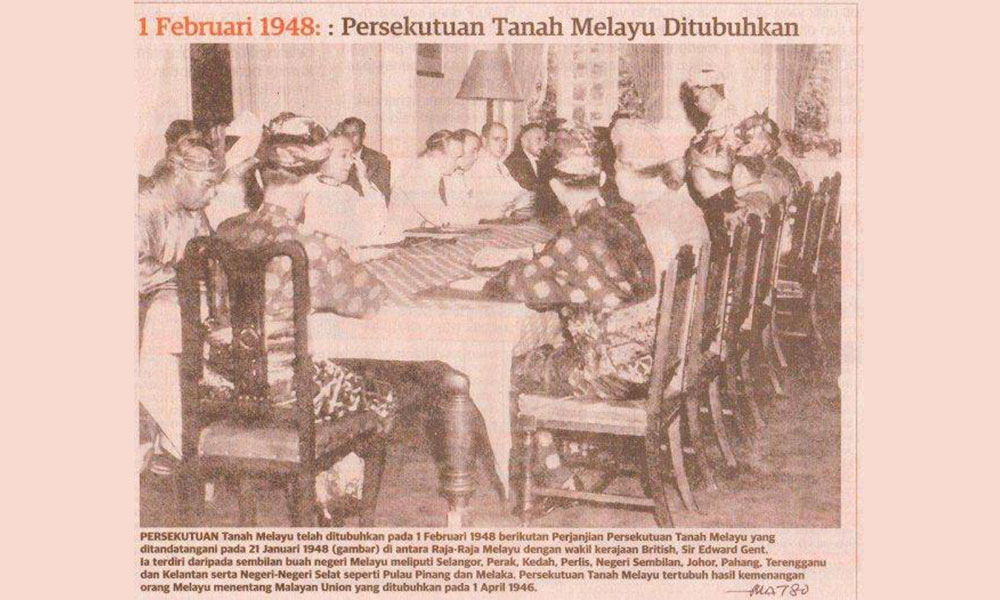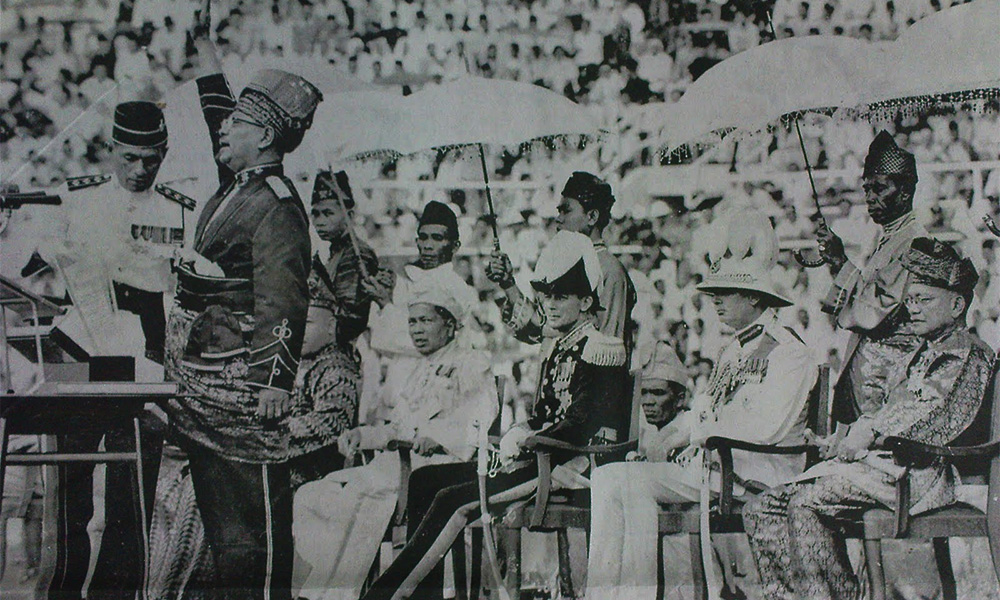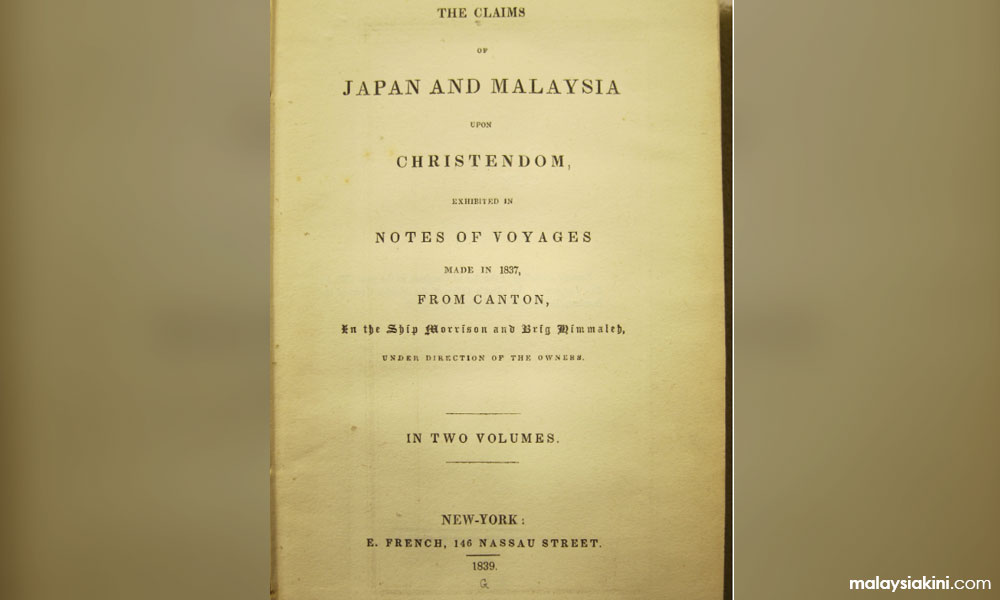HISTORY: TOLD AS IT IS | Every year on Sept 16, Malaysia Day commemorates the 1963 union of East Malaysia (Sabah and Sarawak) with the Federation of Malaya, now commonly referred to as West Malaysia. If 1957 marked the birth of Malaya as a sovereign state, 1963 marked the birth of Malaysia as we know it today.
But the nomenclature "Malaysia" was not coined in that year. It was not even coined in 1937 by Harvard University professor Rupert Emerson in his book ‘Malaysia: A Study in Direct and Indirect Rule’, as it is commonly believed. The term "Malaysia" was already popular in the 19th century and was even used as a title of a book published in 1839. This may come as a surprise as it is a little-known fact. First and foremost, however, we should look into the evolution of Malaysia's roots.
Most scholars agree that "Malaysia" is derived from "Malay", the dominant Malay-speaking ethnic group that populated much of Sumatra and the other islands of the Malay Archipelago. This claim is convincing enough. The Malays had lived in the area for well over 300 years. And the Malay language was the lingua franca of the region beginning in the 14th century or earlier, serving as a trading language for regional and foreign-language speakers. The ethnonym "Malay" or "Melayu", on the other hand, is thought to have originated in Sumatra’s Sungai Melayu, according to the epic ‘Sejarah Melayu’ or the ‘Malay Annals’.
"Malay" is the root term of "Malaya", which was widely used throughout the 18th and 19th centuries. Malaya was the name given to the Malay Peninsula, as well as the neighbouring islands of Penang and Singapore. There are several different interpretations on the origins of the word "Malaya".
According to some scholars, the name is a combination of the Tamil words, "Malay" or "Malai" (hill) and "Ur" (town), which means a "hill town". RO Winstedt, a colonial administrator and orientalist, has buttressed this view, even suggesting that the name "Malaiyur" was given to the localities that were opened and inhabited by local Malays, not only in the Malay Peninsula and Singapore but also as far as Sumatra. Additionally, the word "Malayadvipa", which according to Roland Braddell referred to Sumatra, is mentioned in Puranic texts.
When the British took over Malaya, it was naturally dubbed "British Malaya". Twelve political units were formed before the Second World War in 1945. They were all grouped into three blocks.
First, there was the British crown colony of the Straits Settlements, which included Penang (including Province Wellesley), Malacca and Singapore. These territories were united in 1826. Singapore was designated as the capital in 1832. Second, there was the Federated Malay States, which comprised the states of Perak, Selangor, Negeri Sembilan and Pahang. It was formed in 1896 and its capital was Kuala Lumpur. Third and finally, the Unfederated Malay States of Johor, Kedah, Perlis, Kelantan and Terengganu.

In 1906, Frank Swettenham, a renowned British colonial administrator, probably coined the term "British Malaya", in his book ‘British Malaya, An Account of the Origin and Progress of British Influence in Malaya’ (1907). For him, British Malaya encompassed the entire British controlled Malay Peninsula, including the northern Malay states, which only came under British rule through the Bangkok Treaty in 1909.
Death of Malayan Union
One could assume Swettenham had a foreboding of things to come on this matter when he wrote the book. In other words, the Federated Malay States and the Unfederated Malay States, both of which were indirectly administered by the British as protectorates, as well as the Straits Settlements, which were under the sovereignty of the British Crown, were British Malaya. The term was mostly used informally since the territories were separate entities before the Malayan Union was created in 1946.
The Malayan Union was the first effort at unification of the Federated Malay States, the Unfederated Malay States, Penang and Malacca (Singapore was excluded) undertaken by the British Military Administration, which took authority temporarily after the Second World War. Although short-lived, it provided the first glimpse of a potential nation-state to everyone at the time.
The British created the Malayan Union to grant independence to the peninsula as a single polity. It was envisioned as a united nation with equal rights for everybody. There was a central government, a governor, and legislative and executive councils. The Malay sultans were to keep their positions, but their sovereignty was to be transferred to the British Crown. A British governor was to represent the Malayan Union itself. Its constitution also stirred controversy over an unduly liberal citizenship provision for the non-Malays. The Malay rulers were adamantly opposed to the reforms, and the union was finally revoked on Feb 1, 1948.

The Federation of Malaya was formed as a result. The 1948 Federation of Malaya Agreement stipulated that this federation would be led by a high commissioner, who would also preside over the executive and legislative councils. The sovereignty of the sultans and state autonomy, as well as the special privileges of the Malays, were reinstated (in retrospect, the British upheld these prior to 1946).
Provisions for a Conference of Rulers were added, as well as citizenship restrictions for non-Malays. Citizenship now required at least 15 out of 20 years of residence, a declaration of permanent settlement and a certain level of Malay or English proficiency. Any citizen of the Federation of Malaya, regardless of race, was referred to as "Malayan".
Foundation of Malaysia
On May 27, 1961, Tunku Abdul Rahman, prime minister of the Federation of Malaya, proposed integrating the federation, Singapore, and the three Borneo territories of Sarawak, Sabah and Brunei. Following the collapse of the first attempt to unite the peninsula under the Malayan Union, this second - and this time successful - attempt at political unification gave "Malaysia" a political notion.

Malaysia was eventually formed on Sept 16, 1963, with Brunei refusing to join the merger. Subsequently, Singapore seceded from the federation in 1965. Malaysia was now the name of a new nation. Until then, it had no political connotation.
Although Malaysia was formed as a result of the 1963 merger, the word had been in use since the 19th century. It was a synonym for the "Malay Archipelago" which covered the islands of Southeast Asia’s southern half, from the north-western tip of Sumatra all the way to the easternmost Spice Islands, which were then part of the Netherlands East Indies. The term did not cover the Philippines, but the Malay Peninsula of Thailand was widely seen as an integral part of Malaysia.
Malaysia was, unsurprisingly, used due to the region’s strong "Malayness". The vast expanse of land and sea was inhabited by people with similar qualities and traits. The Malay language was the lingua franca, and all other languages indigenous to the region could be traced back to Malay. Also, the bulk of the people shared a common way of life, customs and adat law, and social and economic organisation. They were physically homogenous, and the majority had shared a common religion, the faith of Islam, for at least three or four hundred years.
Unlike after the founding of Malaysia in 1963, the name "Malaysian" was only used to refer to those who were racially akin to the Malays, were Muslims, and spoke a similar language, as well as those who came from a neighbouring region such as Indonesia. Malaysia’s Malay roots are thus obvious, especially since Malay is now the national language of not only Malaysia but also Brunei and Singapore. The word "Malaysia" went out of fashion when the British occupied the Malay Peninsula and the Dutch controlled Indonesia.

As stated earlier in the introduction, Emerson was far from the first to use the name "Malaysia". Almost a century earlier, in 1839, CW King and G Tradescant Lay had already mentioned it in the title of their book, ‘The Claims of Japan and Malaysia upon Christendom’ exhibited in notes of voyages made in 1837, from Canton, in the ship Morrison and Brig Himmaleh, under the direction of the owners (in two volumes). The book was published following an exploratory voyage to Borneo funded by American merchants. The authors were Americans who were in Singapore in the early 19th century.
Despite the fact that the book was mostly about Borneo, they were captivated by the other parts of the archipelago. The name "Malay Archipelago", however, was not yet commonly known at the time. This could be how European and American traders and missionaries came up with the name "Malaysia" to refer to the Malay Peninsula, Borneo and Indonesia.
To conclude, the term "Malaysia" has a much longer and more interesting history than is generally known. Its name gradually evolved from one that represented a certain ethnic group to one that now represents a multicultural nation.
SIVACHANDRALINGAM SUNDARA RAJA is an Associate Professor at the University of Malaya’s History Department. He is a well-known scholar in the field of Malaysian economic history, with numerous local and international research publications to his credit. - Mkini




No comments:
Post a Comment
Note: Only a member of this blog may post a comment.